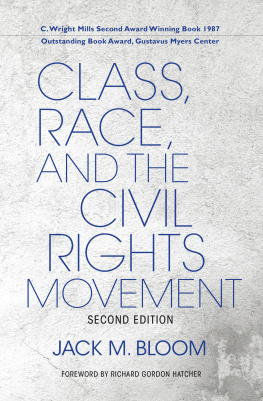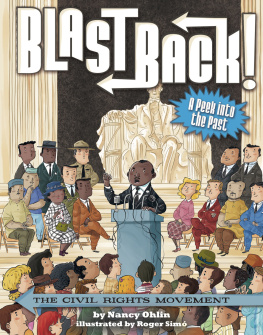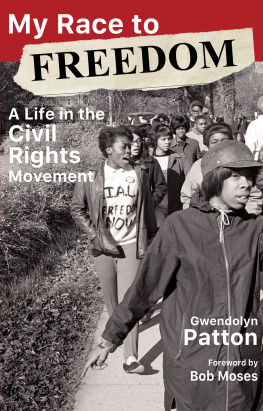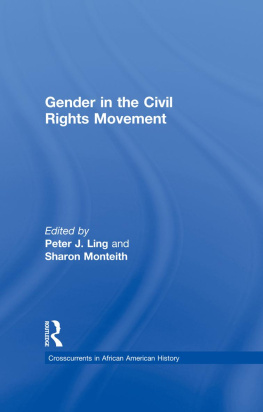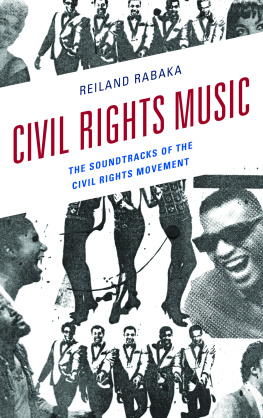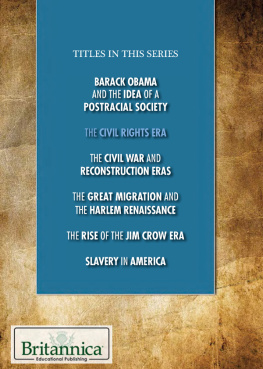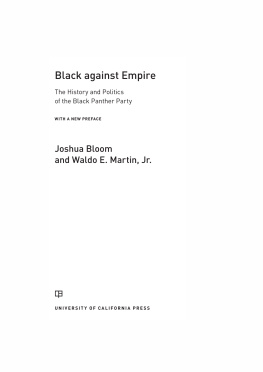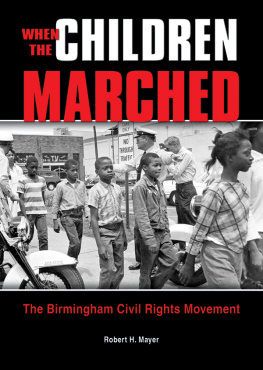Jack M. Bloom - Class, Race, and the Civil Rights Movement, Second Edition
Here you can read online Jack M. Bloom - Class, Race, and the Civil Rights Movement, Second Edition full text of the book (entire story) in english for free. Download pdf and epub, get meaning, cover and reviews about this ebook. year: 2019, publisher: Indiana University Press, genre: Politics. Description of the work, (preface) as well as reviews are available. Best literature library LitArk.com created for fans of good reading and offers a wide selection of genres:
Romance novel
Science fiction
Adventure
Detective
Science
History
Home and family
Prose
Art
Politics
Computer
Non-fiction
Religion
Business
Children
Humor
Choose a favorite category and find really read worthwhile books. Enjoy immersion in the world of imagination, feel the emotions of the characters or learn something new for yourself, make an fascinating discovery.
- Book:Class, Race, and the Civil Rights Movement, Second Edition
- Author:
- Publisher:Indiana University Press
- Genre:
- Year:2019
- Rating:3 / 5
- Favourites:Add to favourites
- Your mark:
- 60
- 1
- 2
- 3
- 4
- 5
Class, Race, and the Civil Rights Movement, Second Edition: summary, description and annotation
We offer to read an annotation, description, summary or preface (depends on what the author of the book "Class, Race, and the Civil Rights Movement, Second Edition" wrote himself). If you haven't found the necessary information about the book — write in the comments, we will try to find it.
Jack M. Bloom: author's other books
Who wrote Class, Race, and the Civil Rights Movement, Second Edition? Find out the surname, the name of the author of the book and a list of all author's works by series.
Class, Race, and the Civil Rights Movement, Second Edition — read online for free the complete book (whole text) full work
Below is the text of the book, divided by pages. System saving the place of the last page read, allows you to conveniently read the book "Class, Race, and the Civil Rights Movement, Second Edition" online for free, without having to search again every time where you left off. Put a bookmark, and you can go to the page where you finished reading at any time.
Font size:
Interval:
Bookmark:
Table of Contents
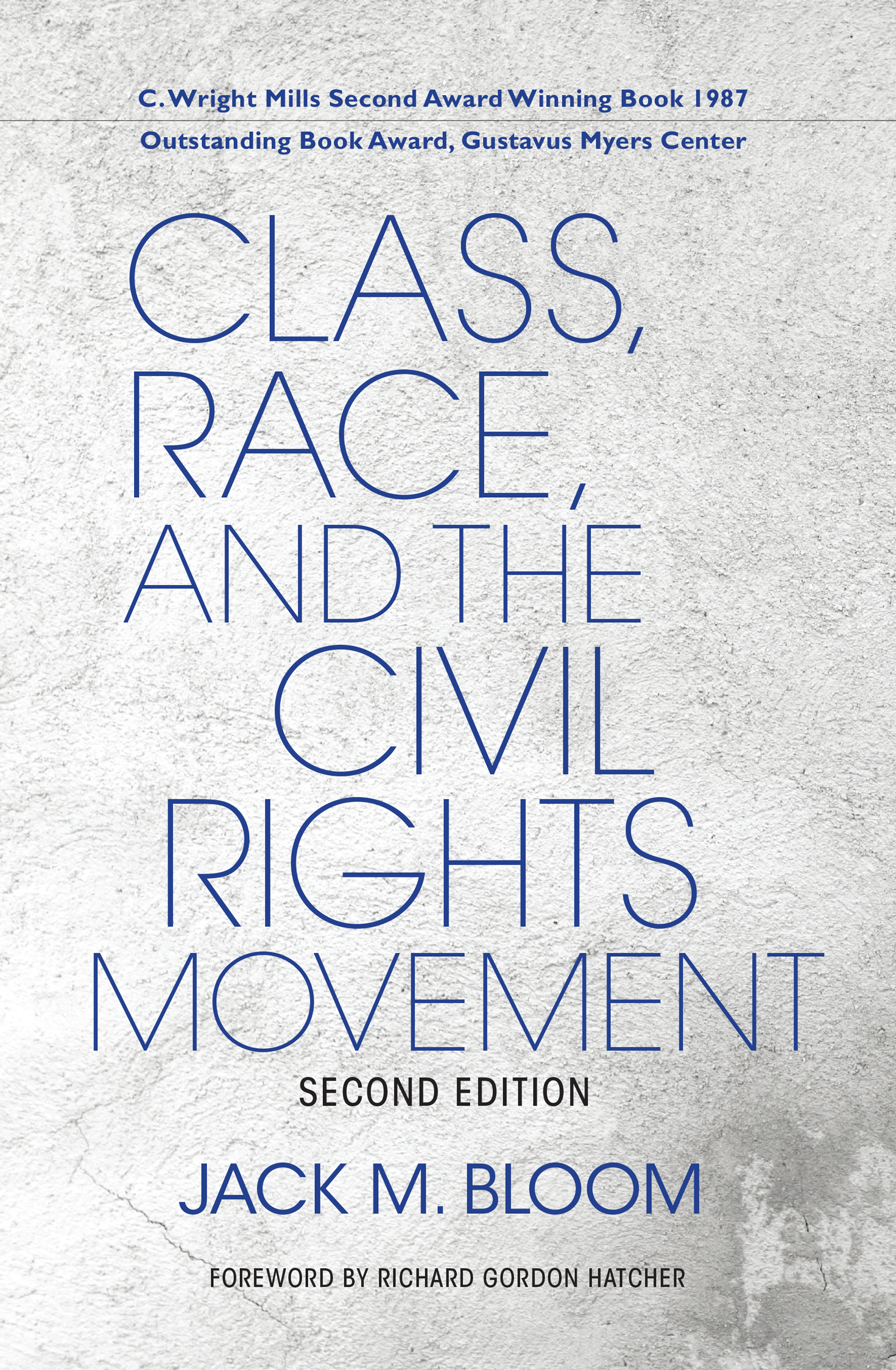
CLASS, RACE, AND THE CIVIL RIGHTS MOVEMENT
BLACKS IN THE DIASPORA
Herman L. Bennett, Kim D. Butler, Judith A. Byfield, and Tracy Sharpley-Whiting, editors
This book is a publication of
Indiana University Press
Office of Scholarly Publishing
Herman B Wells Library 350
1320 East 10th Street
Bloomington, Indiana 47405 USA
iupress.indiana.edu
2019 by Jack M. Bloom
First edition 1987 by Jack M. Bloom
All rights reserved
No part of this book may be reproduced or utilized in any form or by any means, electronic or mechanical, including photocopying and recording, or by any information storage and retrieval system, without permission in writing from the publisher. The paper used in this publication meets the minimum requirements of the American National Standard for Information SciencesPermanence of Paper for Printed Library Materials, ANSI Z39.48-1992.
Manufactured in the United States of America
Cataloging information is available from the Library of Congress.
ISBN 978-0-253-04250-7 (hardback)
ISBN 978-0-253-04246-0 (paperback)
ISBN 978-0-253-04249-1 (ebook)
1 2 3 4 5 24 23 22 21 20 19
To all of those who participated in the civil rights movement and made a better world for all of us.
CONTENTS
C LASS, RACE, AND THE CIVIL RIGHTS MOVEMENT: THE Changing Political Economy of Racism makes an important contribution to the body of literature dealing with the struggle for black equality. Using a class analysis, Professor Jack Bloom has focused on the historical developments that in the 1950s led to the birth of the civil rights movement. Through careful documentation, he has shown that the civil rights movement was the culmination of a political struggle that began with the Reconstruction period of the 1860s. Preceded by great peoples movements based on progressive Populist ideology, the civil rights era was also linked to a shift of black political allegiance from the Republican Party to the Democrats in 1936 with the emergence of the New Deal policies of Franklin Delano Roosevelt.
In all of that, Bloom clearly reveals the roots of racial and class oppression. Analyzing the ongoing relationship between the monied classes of the South and the North, he examines the ties between the post-Reconstruction planter class and Northern banking interests that resulted in the impoverishment of small farmers, both black and white, through control of land ownership and the imposition of the sharecropping system. Additionally, Professor Bloom contends that it was these same classes that funded racist organizations such as the Ku Klux Klan and the White Citizens Councils, whose actions were to terrorize and intimidate the black population while blunting unity between the black and white poor of the South.
A striking example of how racism was used to disfranchise both blacks and whites in Mississippi came through a change in the state constitution and imposed voting restrictions through property qualifications, literary requirements, and poll taxes. While touted as a way to eliminate the black vote, the result was that not only were blacks disfranchised, but whites were, as well. Subsequently, the right to vote became the sole property of the white upper classes. It would take the weight of the civil rights movement, a massive march in Selma, Alabama, and passage of the Voting Rights Act in 1965 to reverse this unfair and antidemocratic history.
Calling the civil rights movement the Second Reconstruction, Bloom cites several key factors that led to its development, including the landmark 1954 Brown v. Board of Education Supreme Court decision that reversed the racist separate-but-equal doctrine handed down in the 1896 Plessy v. Ferguson case. The fight to implement Brown through integration of the Southern school system became the rallying cry of an emerging black leadership under the banner of the National Association for the Advancement of Colored People (NAACP).
The second key factor was the organization in 1956 of the Montgomery bus boycott. Led by Dr. Martin Luther King Jr., the boycott laid the foundation for a deepening unity among blacks, whose expectations, heightened twenty years before by the more enlightened federal policies of the New Deal era, were now fired by a determination to end the fundamental indignity and repression of segregation. The initial demand for equal access to public facilities and conveyances grew into demands that challenged basic economic policies, and the fight for jobs, housing, and health care eventually became the issues of the mass movement.
The involvement of the masses of black people in the Montgomery bus boycott opened the door to new forms of resistance that sprang up all over the South. A bright star shining in the gloom of the McCarthy period, this broad-based, black-led movement became the mother of other significant forces, including the student movement of the 1960s and the antiVietnam War and womens movements, in addition to providing the springboard for the first independent black-based political party of its type, the Mississippi Freedom Democratic Party (MFDP).
Tying together the issues of economic exploitation, racism, and war, the civil rights movement raised basic class issues and eventually carried out a social revolution that changed the political fabric and economic policies of our country forever. Professor Bloom contends that state-sanctioned segregation and second-class citizenship are relics of the past and not likely to return, owing to the proven social power of blacks and their historic and potential allies among the white working class. He has amply provided the research to support a general thesis that the denial of political rights to blacks and forced segregation were products of the class, economic, and political system of the South. For this reason, Class, Race, and the Civil Rights Movement invites thought and comment, and it provides an excellent secondary source for scholars of the era.
Richard Gordon Hatcher
Mayor of Gary, Indiana
M ANY PEOPLE WERE GENEROUS IN PROVIDING HELP AND support to this project. Their aid sometimes included sharp criticism and insightful suggestions. Some provided needed personal support. I especially want to thank: Herbert Blumer, Troy Duster, William J. Wilson, and James Geschwender. I also wish to gratefully acknowledge the contributions of R. Stephen Warner, John Martin, Mary Glen Wiley, Bert Useem, Ronald Cohen, James Lane, Kathryn Johnson, Robert Catlin, Marty Zusman, Ed Escobar, Gayle Gullett, Eric Hirsch, Ann Williams, Morris Janowitz, Sydney Wilhelm, and John Leggett. Of course, I take full responsibility for the final product. Special thanks, also, to Anne Koehler, who runs the interlibrary loan desk at Indiana University Northwest and who, together with Clyde Eric Robinson, got me everything I needed.
CLASS, RACE, AND THE CIVIL RIGHTS MOVEMENT
W HILE MANY HIGH-QUALITY STUDIES OF THE CIVIL RIGHTS movement have been published since this book originally appeared, none of them has challenged the thesis I presented originally in part one, in which I contend that the system of racial oppression that blacks confronted in the civil rights movement had been constructed to serve the interests of the landed ruling class of the South. I argued further that the changing class system of the South that resulted from the Great Depression of the 1930s, the government response to it in the New Deal, and the consequences of World War II all brought about significant social and economic changes in the class structure of the South. These changes, in turn, made it possible for blacks to pit the agrarian ruling class against the class interests of the emerging commercial and industrial bourgeoisie and the middle class. While the old ruling class required the submission of blacks through a system of rules and regulations in order to prosper, with repression and terrorism used to uphold the system, the new bourgeoisie did not, and it was vulnerable to economic and political pressures in a way that the agrarians were not. And the efforts on the part of the old agrarian ruling class to retain its dominance and the system upon which it rested damaged the interests and concerns of the middle class. So, blacks and the coalition they managed to cohere were able to force changes in the racial system.
Next pageFont size:
Interval:
Bookmark:
Similar books «Class, Race, and the Civil Rights Movement, Second Edition»
Look at similar books to Class, Race, and the Civil Rights Movement, Second Edition. We have selected literature similar in name and meaning in the hope of providing readers with more options to find new, interesting, not yet read works.
Discussion, reviews of the book Class, Race, and the Civil Rights Movement, Second Edition and just readers' own opinions. Leave your comments, write what you think about the work, its meaning or the main characters. Specify what exactly you liked and what you didn't like, and why you think so.

